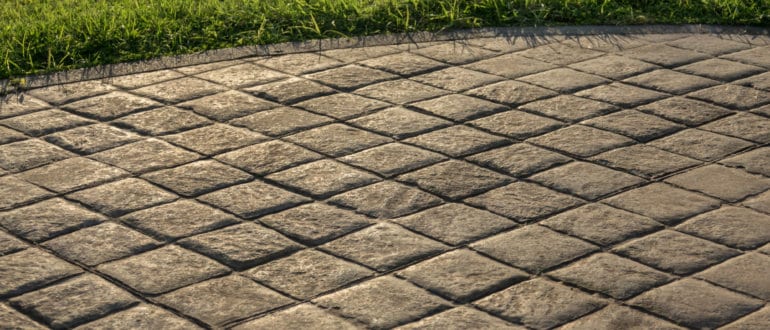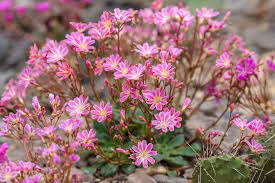White clothes are a wardrobe staple, representing cleanliness and sophistication. However, when mixed with colored items, doing the laundry becomes a bit more challenging, but fear not! In this article, you will get all the practical tips on ensuring your whites remain brilliant, vibrant, and stain-free. From sorting to washing and drying, we’ve got you covered.
Table of contents
- Can you Wash White with Colors?
- How to Wash White Clothes With Color in Them
- How to Wash White Clothes with Designs
- Can You Wash White Clothes with Colors in Cold Water?
- Can you Bleach White Shirts with Designs?
- Laundry tips on How to Keep White Clothes White
- What are the Importance of Washing White Clothes
- Frequently Asked Questions
- Conclusion
- References
- Recommendations
Can you Wash White with Colors?
Washing white clothes with colored items can be done with care to prevent color bleeding and maintain the brightness of whites. So, Yes, you can wash whites with colors, but precautions should be taken to avoid color bleeding and discoloration of the whites.
You can read this: What Does Thread Count Really Mean?
Let’s discuss tips on how to wash white clothes with colors in them.
How to Wash White Clothes With Color in Them
Washing white clothes with colors requires some care to prevent the colors from bleeding and staining the white fabric. Here are some tips to help you wash white clothes with colored items:
- Sort your laundry: First, separate whites from colors. This is a basic step to prevent color transfer. Then check clothing labels for specific washing instructions.
- Pre-treat stains: If there are any stains on your white clothes, pre-treat them before washing. Also, use a stain remover or apply a small amount of laundry detergent directly to the stain and gently rub.
- Choose a suitable detergent: Use a high-quality laundry detergent that is suitable for both whites and colors. There are detergents labeled as “color-safe” or “for whites and colors” that can help prevent color bleeding.
- Cold water is your friend: Wash in cold water to help prevent colors from bleeding. Hot water can cause dyes to leach from colored fabrics.
- Turn clothes inside out: Always turn colored clothes inside out before washing. This can help minimize friction between the colored and white fabrics, reducing the likelihood of color transfer.
- Use a gentle cycle: Opt for a gentle or delicate cycle on your washing machine. This cycle is less aggressive and helps protect the integrity of both white and colored fabrics.
- Add vinegar or salt: You can consider adding a half cup of distilled white vinegar or salt to the wash. These can help set colors and prevent bleeding. However, always check garment care labels to ensure compatibility.
- Check for colorfastness: So, before washing a new item with whites, test for colorfastness. Moisten a hidden seam or inconspicuous area and blot with a white cloth. If the color transfers, wash the item separately.
- Promptly remove from the washer: Promptly remove the clothes from the washing machine as soon as the cycle is complete. Leaving wet clothes in the machine can increase the likelihood of color bleeding.
- Air dry when possible: If feasible, air-dry your clothes instead of using a dryer. The heat from the dryer can sometimes set stains or cause colors to bleed.
How to Wash White Clothes with Designs
- Turn Inside Out: Turn clothes with designs inside out before washing to protect the design.
- Use Cold Water: Wash clothes with designs in cold water to preserve the colors and prevent fading.
- Avoid Bleach: Avoid using bleach, as it can affect the colors of the designs.
- Air Dry: Air-dry clothes with designs to prevent excessive wear and maintain the integrity of the designs.
Also, read this: How Does Electric Toasters Work | Best Working Conditions
Can You Wash White Clothes with Colors in Cold Water?
Yes, washing white clothes with colors in cold water is generally safe and helps prevent color bleeding. Cold water is effective in cleaning clothes while minimizing the risk of colors fading or bleeding onto whites.
Always check the care labels on your clothing items for any specific temperature recommendations.
Can you Bleach White Shirts with Designs?
Bleaching white shirts with designs can be a bit tricky, as traditional bleach may damage or fade the designs. However, you can follow these steps to bleach white shirts with designs more safely:
- Check the care label: Ensure the shirt is bleach-safe. Some fabrics and designs may not withstand bleach.
- Dilute the bleach: Mix bleach with water according to the instructions on the bleach container. A general ratio is 1 part bleach to 4 parts water.
- Spot test: Before applying the bleach mixture to the entire shirt, spot-test a small, inconspicuous area to ensure it won’t damage the fabric or the design.
- Apply carefully: Using a sponge or a soft brush, apply the diluted bleach mixture to the stained areas or the entire shirt if needed. Be cautious around the designs.
- Rinse thoroughly: Rinse the shirt thoroughly with cold water after the desired level of whiteness is achieved.
- Neutralize: To neutralize any remaining bleach, soak the shirt in a mixture of water and a small amount of vinegar for a few minutes.
- Wash as usual: Wash the shirt as usual with a mild detergent to remove any remaining bleach and vinegar.
How can you Wash White Clothes with Stains
- Pre-treat stains: Before washing, pre-treat any visible stains with a stain remover or a mixture of water and a small amount of detergent. Gently rub the stain with a soft brush.
- Separate whites from colors: Wash white clothes separately from colored ones to prevent color bleeding.
- Use bleach cautiously: If your white clothes can tolerate bleach, add a bleach product to the wash. Follow the instructions on the bleach container for the correct amount.
- Wash in warm water: Use warm water to help lift dirt and stains from the fabric.
- Choose a good detergent: Select a quality laundry detergent that is effective against stains and suitable for whites.
- Soak if necessary: For stubborn stains, you can soak the white clothes in a mixture of water and oxygen bleach before washing.
- Check for stains before drying: Ensure that stains are completely removed before drying, as heat can set stains.
Check this: How to Get Mold Out of Clothes | Full Guide
How can I get White Clothes White again?
- Sort by fabric: Separate whites from colored clothes to prevent color transfer.
- Use a quality detergent: Choose a laundry detergent specifically designed for whites, as these often contain brightening agents.
- Lemon juice and sunlight: Lemon juice has natural bleaching properties. Mix lemon juice with water and let your white clothes soak in the solution for a while. Then, dry the clothes in the sunlight.
- Baking soda: Add baking soda to your regular detergent to boost its cleaning power. Baking soda can help remove stains and brighten whites.
- Vinegar: Adding white vinegar to the rinse cycle can help break down detergent residue, brighten whites, and act as a fabric softener.
- Bleach cautiously: If your clothes can withstand bleach, use it according to the instructions on the container. Ensure you dilute it properly to avoid damage.
- Regular maintenance: Keep whites white by laundering them regularly and addressing stains promptly.
How can you whiten white Clothes that have Yellowed without Bleach?
You can achieve whitening white clothes that have yellowed without using bleach using alternative methods. Here are some tips:
- Vinegar: This is one of the method. Add one cup of distilled white vinegar to your washing machine during the rinse cycle. Vinegar helps to break down residues and brightens whites.
- Baking Soda: Mix half a cup of baking soda with your regular detergent. Also, baking soda can help to neutralize odors and lift stains, restoring whiteness.
- Lemon Juice: You can squeeze the juice of one lemon into a basin of water. After that, soak the yellowed clothes in the lemon water for an hour before washing.
- Aspirin: Crush several aspirin tablets and dissolve them in warm water. Soak your clothes for a few hours before washing.
- Hydrogen Peroxide: Another method is to mix equal parts of hydrogen peroxide and water. Soak the clothes for 30 minutes before washing.
- Sunlight: Hang your white clothes in direct sunlight after washing. Sunlight has a natural bleaching effect and can help whiten fabrics.
Also, check this: How Do Sewer And Septic Systems Work?
Laundry tips on How to Keep White Clothes White
Here are some tips to help you keep your white clothes looking bright and white:
- Separate Whites from Colors: Wash white clothes separately from colored items to prevent color bleeding. This is especially important for the first few washes of new white garments.
- Use a Quality Detergent: Choose a high-quality detergent designed for whites. Look for one that contains optical brighteners to maintain the brightness of your whites.
- Pre-treat Stains: Treat any stains on white clothes promptly before washing. Use a stain remover or a mixture of baking soda and water to pre-treat stains.
- Avoid Overloading the Washer: Overloading the washing machine can prevent clothes from getting clean. Whites need room to agitate freely for the detergent to work effectively.
- Wash in Warm Water: Use warm water instead of hot water for white clothes. Hot water can cause whites to yellow over time. However, always check the care label for specific washing instructions.
- Bleach with Caution: Also, use bleach sparingly, as excessive use can weaken fabrics and cause yellowing. Consider oxygen bleach as an alternative to chlorine bleach for a gentler approach.
More Tips: How to Keep White Clothes White
- Sun-dry Whenever Possible: The sun is a natural bleach. Hang your white clothes outside to dry whenever possible. The sun’s UV rays can help keep whites looking crisp and bright.
- Avoid Overusing Fabric Softener: While fabric softeners make clothes feel softer, they can also reduce the absorbency of fabrics and trap in stains. Use fabric softener in moderation or consider skipping it for white loads.
- Clean the Washing Machine: Regularly clean your washing machine to prevent the buildup of detergent residue, which can contribute to dullness in white clothes.
- Store Whites Properly: Store white clothes in a cool, dry place away from direct sunlight. Avoid using plastic bags for long-term storage, as they can trap moisture and lead to yellowing.
- Be Mindful of Products with Benzoyl Peroxide: Avoid using skincare products containing benzoyl peroxide when wearing white clothing, as it can bleach and discolor fabrics.
- Read Care Labels: In addition, always follow the care instructions on clothing labels. Different fabrics may require different care, and following these instructions can help prolong the life and brightness of your white clothes.
See also: How to Remove Scratches from Stainless Steel Appliances | Full Guide
What are the Importance of Washing White Clothes
Washing white clothes is important for several reasons, including:
- Appearance: White clothes tend to show stains, dirt, and discoloration more prominently than colored garments. Regular washing helps maintain the crisp, clean appearance of white clothing, ensuring they look fresh and well-kept.
- Hygiene: Washing white clothes removes bacteria, sweat, and body oils that accumulate on the fabric over time. This helps prevent the growth of odor-causing bacteria and ensures that your clothes remain hygienic and pleasant to wear.
- Longevity: Proper care, including regular washing, can extend the lifespan of white clothes. Stains and dirt can weaken fabric fibers if left untreated, leading to premature wear and tear. Washing helps remove these contaminants and preserves the integrity of the fabric.
- Professionalism: In many settings, especially workplaces or formal events, wearing clean and well-maintained white clothing is often associated with professionalism and a sense of responsibility. Regular washing contributes to a polished and put-together appearance.
- Stain Removal: White clothes are more susceptible to visible stains, whether from food, beverages, or other sources. Prompt washing increases the chances of successfully removing stains before they become set and difficult to eliminate.
- Color Maintenance: Regular washing helps prevent white clothes from yellowing or developing a grayish tint, which can occur due to factors like exposure to sunlight, sweat, and certain detergents. Following care instructions and using appropriate detergents can preserve the bright, true white color of the fabric.
- Comfort: Clean clothes are more comfortable to wear. Washing removes accumulated particles, allergens, and irritants, contributing to a more comfortable and enjoyable wearing experience.
- Preventing Damage: Dirt and stains can attract pests like moths, which may damage the fabric over time. Regular washing helps eliminate these attractants and protects your white clothes from potential harm.
Related Post: How to Clean a Swimming Pool: Quick Maintenance Guide
Frequently Asked Questions
The frequency of washing depends on wear, but light refreshes between wears can be beneficial.
While bleach is powerful, it may not be suitable for all fabrics. Always check care labels and consider alternatives for delicate items.
Troubleshoot stains with targeted treatments, and if all else fails, consult with a professional cleaner.
Yes, many DIY fabric softeners not only soften clothes but also contribute to maintaining their brightness.
Choose appropriate storage conditions, including a cool, dark, and dry environment, to prevent yellowing over time.
Conclusion
In conclusion, washing white clothes with color in them requires a thoughtful approach. By following these guidelines, you can maintain the vibrancy and longevity of your clothes.
Remember the importance of sorting, choosing the right detergent, and adopting proper washing and drying practices.




